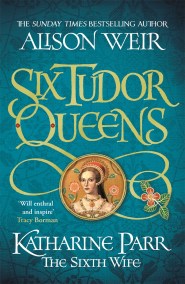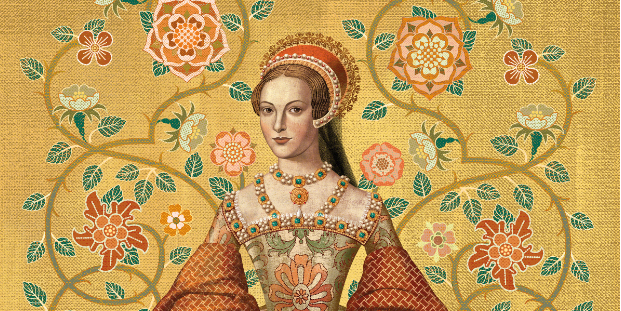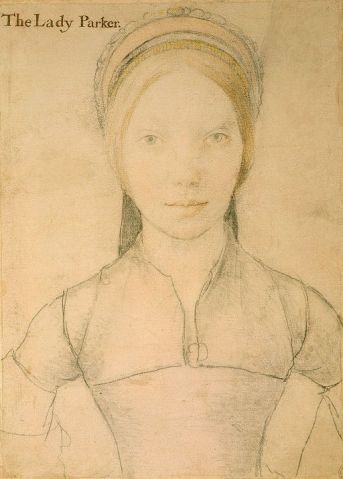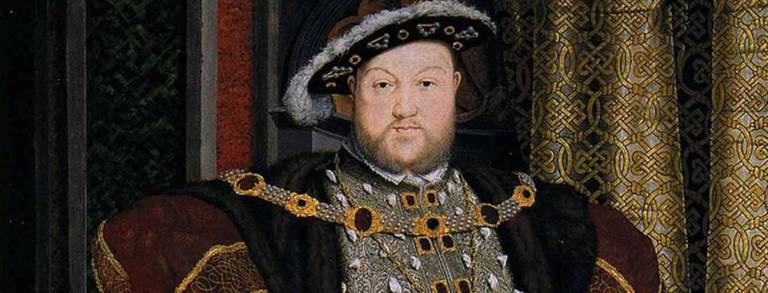Anne Askew by Alison Weir

Although torture was officially illegal in England, some prisoners in the Tower did suffer interrogation on the rack and by other cruel methods, such as the thumbscrews, the boot or the Scavenger’s Daughter, an infamous contraption that compressed the body so severely that blood would spurt out of the nose and other orifices.
The first – and only – woman to be racked in the Tower was Anne Askew, during the reign of Henry VIII.
Anne Askew was born in Lincolnshire in 1521. When she was fifteen her family forced her to marry a man called Thomas Kyme. Anne rebelled against her husband by refusing to adopt his surname, and she argued with him about religion. Anne was a Protestant, a follower of Martin Luther, while her husband was a traditional Catholic. At that time, professing Protestant beliefs was heresy, and punishable by burning at the stake.
Eventually Anne left her husband and went to London, where she gave sermons and distributed banned Protestant books. This led to her being arrested. Her husband was sent for and ordered to take her home to Lincolnshire; but Anne soon escaped, and it was not long before she was back in London, preaching.
She was arrested again, in 1546, and underwent several examinations for heresy. At that time, there was a court plot to bring down Henry VIII’s sixth wife, Katharine Parr, whom her enemies suspected of heresy, and of having been in contact with Anne Askew. Sir Anthony Kingston, the Constable of the Tower, was ordered to torture Anne in an attempt to force her to name other Protestants and incriminate the Queen. The Lord Chancellor himself and Sir Richard Rich were present at the examination.
We have her own account, written afterwards, of what happened next.
‘Then Master Rich and one of the council charged me, upon my obedience, to show unto them if I knew any man or woman of my sect. My answer was, that I knew none. Then said they unto me, that the King was informed that I could name, if I would, a great number of my sect. I answered, that the King was as well deceived in that behalf, as dissembled with in other matters.
‘Then they said that there were many gentlewomen that gave me money: but I knew not their names. Then they said, there were of those of the Privy Council that did maintain me: and I said, No.’
It was then that the decision was made to put Anne Askew on the rack. The rack was an instrument designed for stretching the body and pulling limbs out of their sockets. It was a large, wooden frame on which the victim was laid on their back with their wrists and ankles roped to two rollers at each end. These rollers were turned in opposite directions until the joints were dislocated.
Anne was taken down to a dungeon, and told to strip to her shift, then Sir Anthony Kingston ‘commanded his jailor to pinch her with the rack. Which being done as much as he thought sufficient, he went about to take her down, supposing that he had done enough. But the Lord Chancellor, not contented that she was loosed so soon, confessing nothing, commanded the Lieutenant to strain her on the rack again: which, because he denied to do, tendering the weakness of the woman, he was threatened therefore grievously by the Chancellor, who said that he would signify his disobedience unto the King. And so, consequently, the Lord Chancellor and Master Rich, throwing off their gowns, would needs play the tormentors themselves; first asking her if she were with child. To whom she answered, “Ye shall not need to spare for that, but do your wills upon me.”’
Anne wrote later: ‘Then they did put me on the rack, because I confessed no ladies or gentlewomen to be of my opinion, and thereon they kept me a long time; and because I lay still, and did not cry, my Lord Chancellor and Master Rich took pains to rack me with their own hands, till I was nigh dead.’
When the wheel of the rack was turned, it lifted Anne so that she was held taut about five inches above its bed and slowly and agonisingly stretched. Quietly and patiently praying, ‘she abode their tyranny, till her bones and joints were almost plucked asunder.’ Her cries could be heard in the garden next to the White Tower, where the Lieutenant’s wife and daughter were walking.
Anne recorded: ‘Then the lieutenant caused me to be loosed from the rack. I swooned, and then they recovered me again. After that I sat two long hours reasoning with my Lord Chancellor upon the bare floor; where he, with many flattering words, persuaded me to leave my opinion. But my Lord God gave me grace to persevere, and will do, I hope, to the very end.’
Poor Anne was so badly injured that she had to be ‘carried away in a chair’.
After the Chancellor and Rich had departed, ‘the good Lieutenant, taking a boat, sped him to the court in all haste to speak with the King before the others; who, making his humble suit to the king, desired his pardon, and showed him the whole matter as it stood, and of the racking of Mistress Askew, and how he was threatened by the Lord Chancellor, because, not knowing his Highness’s pleasure, he refused to rack her; which he, for compassion, could not find in his heart to do, and therefore humbly craved his Highness’s pardon. Which, when the king had understood, he seemed not very well to like of their so extreme handling of the woman, and also granted to the Lieutenant his pardon, willing him to return and see to his charge.
‘Great expectation was in the mean season among the warders and other officers of the Tower, waiting for his return; whom when they saw come so cheerfully, declaring unto them how he had sped with the king, they were not a little joyous, and gave thanks to God there-for.’
Anne Askew’s fate was recorded by John Foxe in his famous Book of Martyrs:
‘Wherefore the day of her execution was appointed, and she brought into Smithfield in a chair, because she could not go on her feet, by means of her great torments. When she was brought unto the stake she was tied by the middle with a chain that held up her body. When all things were prepared, the King’s letters of pardon were brought, whereby to offer her safeguard of her life if she would recant, which she would neither receive, neither yet vouchsafe once to look upon. Thus, she being troubled so many manner of ways, and having passed through so many torments, now ended the long course of her agonies, being compassed in with flames of fire, as a blessed sacrifice unto God, leaving behind her a singular example of Christian constancy for all men to follow.’
Mercifully, the executioner hung a bag of gunpowder around her neck as a humane act in order to speed her death, and it exploded almost at once. Those who saw her die were impressed by her courage and reported that she did not scream until the flames reached her chest.
'A detailed and convincing portrait of an extraordinary life... this series is a serious achievement' THE TIMES
'This brilliant series has brought Henry VIII's six wives to life as never before. This novel will enthral and inspire, just as much as it will break your heart' TRACY BORMAN
Alison Weir, historian and author of the SUNDAY TIMES bestselling SIX TUDOR QUEENS series, recounts the story of Henry VIII's last wife - Katharine Parr, the queen who survived him.
---
A WOMAN TORN BETWEEN LOVE AND DUTY.
Two husbands dead, a boy and a sick man. And now Katharine is free to make her own choice.
The ageing King's eye falls upon her. She cannot refuse him... or betray that she wanted another.
She becomes the sixth wife - a queen and a friend. Henry loves and trusts her. But Katharine is hiding another secret in her heart, a deeply held faith that could see her burn...
KATHARINE PARR. HENRY'S FINAL QUEEN. HER STORY.
Renowned, bestselling historian Alison Weir reveals a warm, clever woman of great fortitude who rose boldly to every turn her life took.
'Katharine Parr deserves better than to be known just as Henry VIII's sixth wife - the one who survived. And there's no-one better placed than Alison Weir to restore her to her rightful place' SARAH GRISTWOOD
'The conversations are sparkling, gripping and word-perfect. As King Henry ages, the machinations of his vicious court are never far away' HISTORICAL NOVEL SOCIETY
'For the first time I felt as though, thanks to Alison's skilful writing and storytelling, I came to "know" Katharine' NICOLA TALLIS
'A tour de force. If you think you know everything about Henry VIII's last queen, you're in for a wonderful treat - you don't!' SUSAN RONALD
'An absorbing and fascinating read, meticulously researched as is always the case with Alison's work, and she really made Katharine live' SARAH RAYNE
---
PRAISE FOR THE SIX TUDOR QUEENS SERIES:
'Weir is excellent on the little details that bring a world to life' Guardian
'Profoundly moving... lingers long after the last page' Elizabeth Fremantle
'Well researched and engrossing' Good Housekeeping
'Utterly gripping and endlessly surprising' Tracy Borman
'Hugely enjoyable . . . Alison Weir knows her subject and has a knack for the telling and textural detail' Daily Mail







